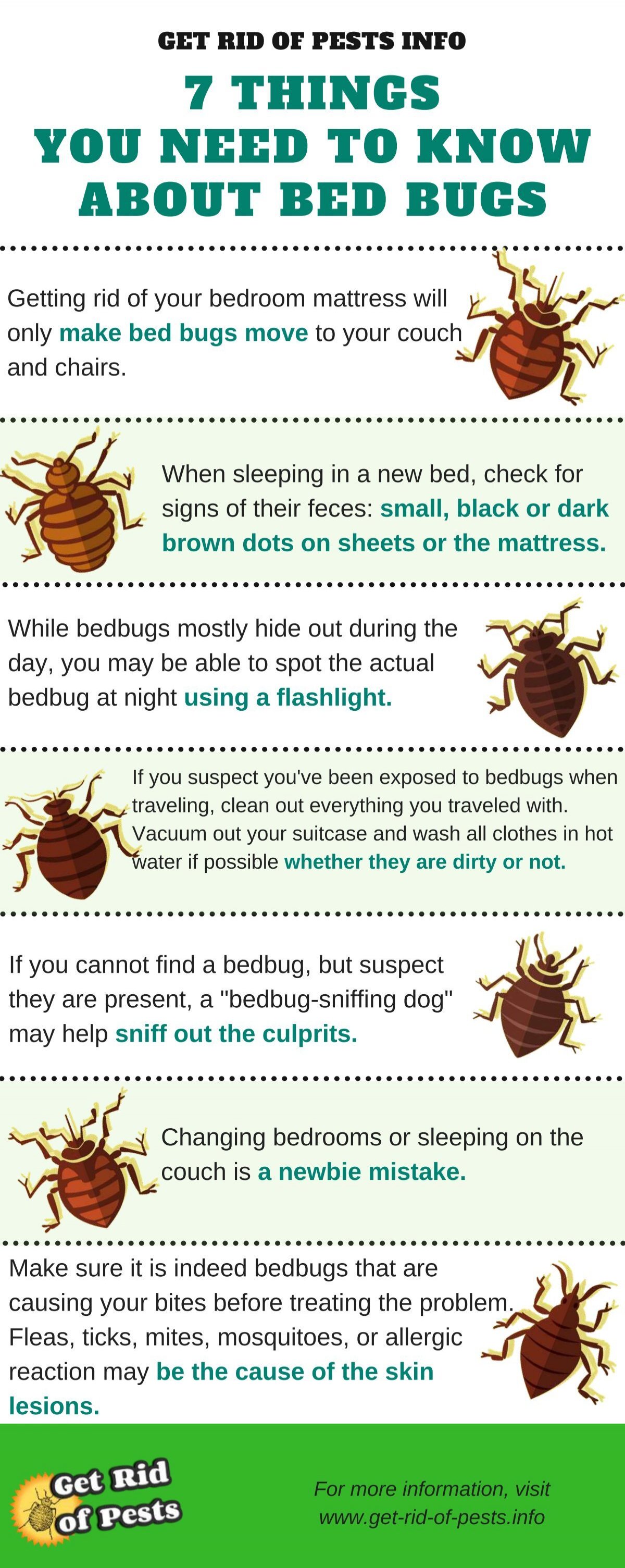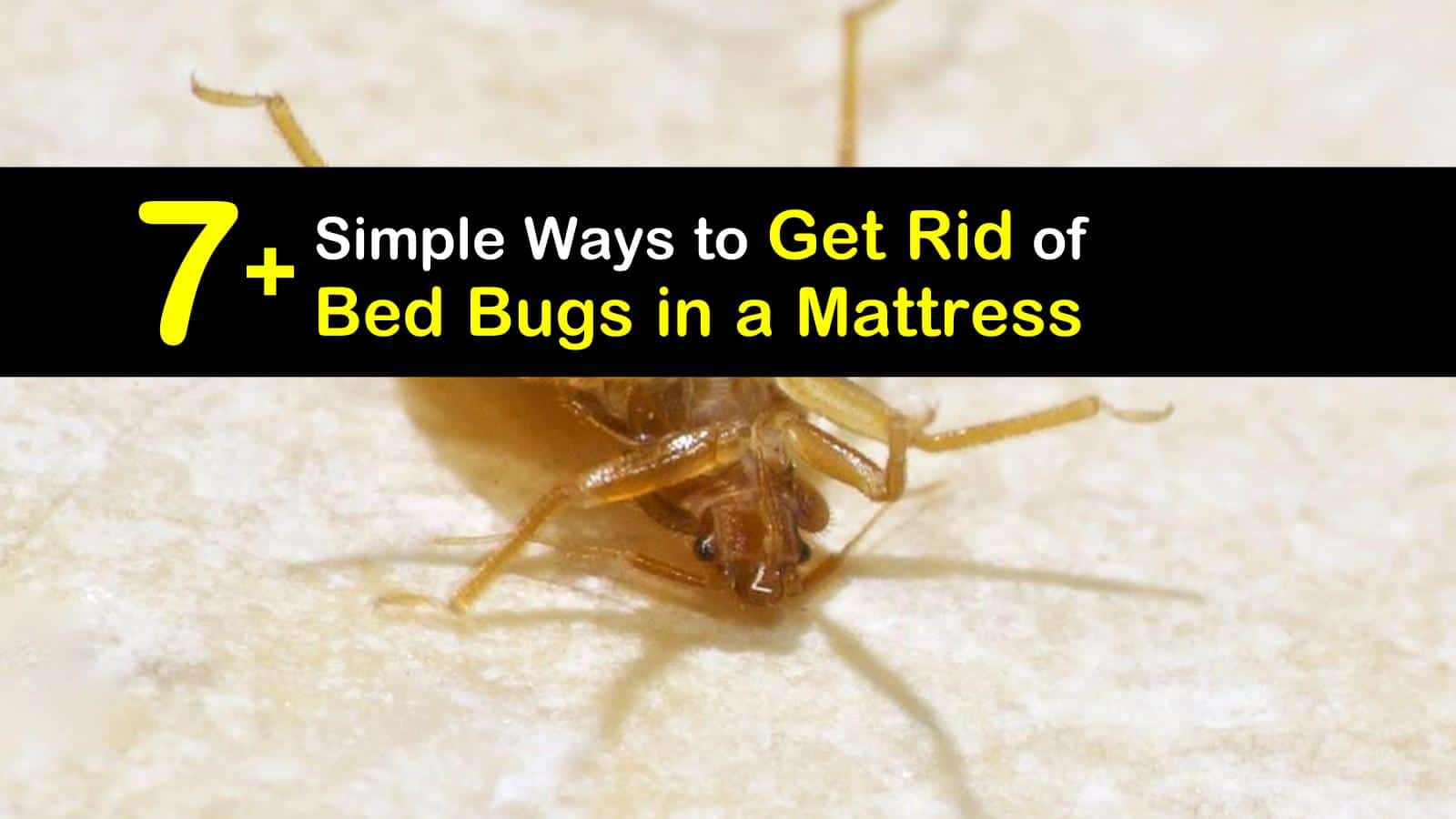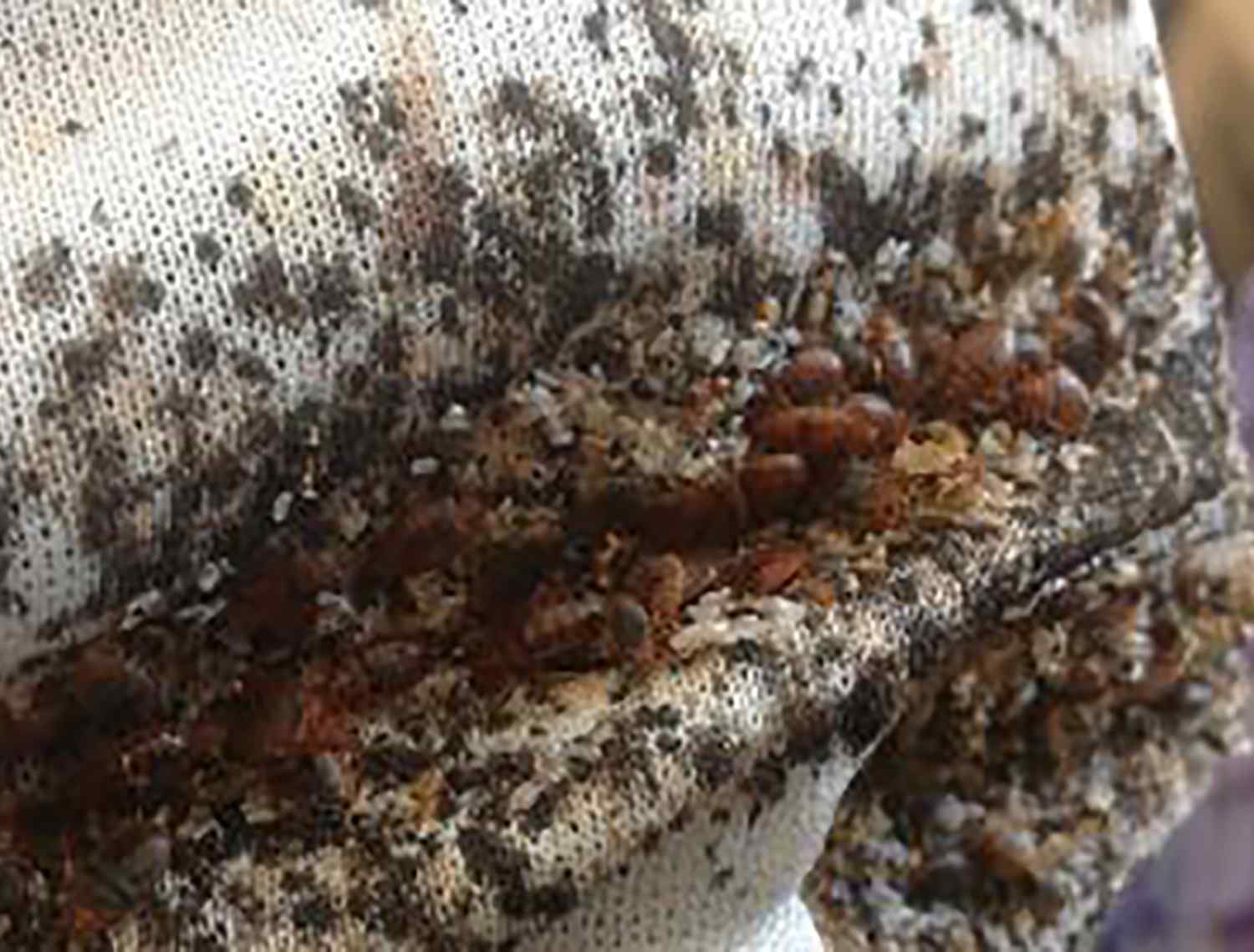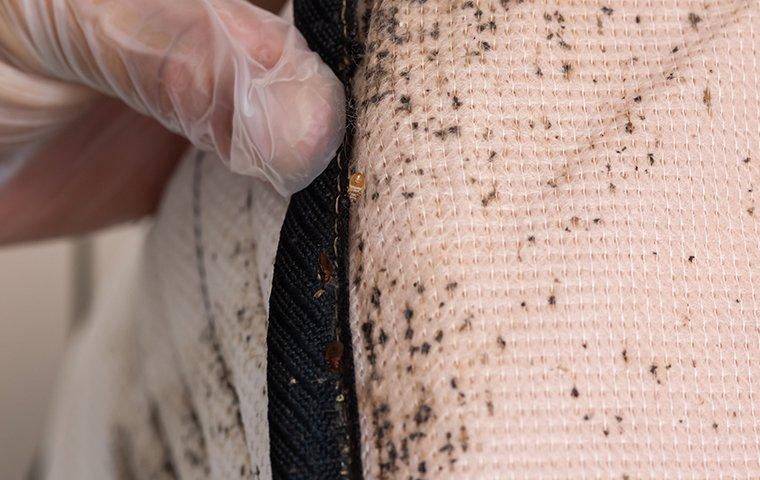How to Check for Bed Bugs in a Mattress
If you suspect that your mattress may have bed bugs, it's important to do a thorough check to confirm their presence. Bed bugs are small, flat insects that feed on human blood and can often be found in mattresses. Here's how you can check for bed bugs in a mattress:
1. Look for physical signs - The first thing you should do is inspect your mattress for any physical signs of bed bugs. These include small blood stains, dark spots (bed bug feces), or actual bugs crawling on the surface.
2. Use a flashlight - Bed bugs are nocturnal creatures, so they are most active at night. Use a flashlight to check for any movement on your mattress, including the seams, crevices, and piping.
3. Check the box spring - Bed bugs can also hide in the box spring of your mattress. Make sure to check this area thoroughly as well.
4. Look for eggs - Bed bug eggs are tiny, white, and shaped like a grain of rice. They are often found in clusters and can be difficult to spot. Look for them in the seams, folds, and tags of your mattress.
How to Identify Bed Bugs on a Mattress
Identifying bed bugs on a mattress can be tricky, as they are small and can easily hide in the crevices and seams. Here are some ways to identify bed bugs on a mattress:
1. Look for bites - The most common way people identify bed bugs is through the bites they leave on the skin. These bites are often in a straight line and can be itchy and red.
2. Check for blood stains - If you wake up with small blood spots on your sheets or mattress, it could be a sign of bed bugs feeding on you during the night.
3. Look for their physical appearance - Bed bugs are small, about the size of an apple seed, and are reddish-brown in color. They have a flat, oval-shaped body and six legs.
4. Use a bed bug detector - There are various bed bug detectors available that use CO2, heat, or pheromones to attract and trap bed bugs. These can be helpful in identifying their presence on your mattress.
Signs of Bed Bugs in a Mattress
There are several signs that can indicate the presence of bed bugs in a mattress. These include:
1. Red, itchy bites on the skin - Bed bug bites are often in a straight line and can be itchy and red.
2. Blood stains on the sheets - If you wake up with small blood spots on your sheets or mattress, it could be a sign of bed bugs feeding on you during the night.
3. Dark spots on the mattress - Bed bug feces can appear as small dark spots on the surface of a mattress.
4. Actual bugs or eggs - If you see any actual bed bugs or their eggs on your mattress, it's a clear sign that you have an infestation.
How to Get Rid of Bed Bugs in a Mattress
If you have confirmed the presence of bed bugs in your mattress, it's important to take immediate action to get rid of them. Here are some steps you can take:
1. Vacuum the mattress - Use a vacuum with a HEPA filter to thoroughly vacuum your mattress. Make sure to get into all the crevices and seams where bed bugs may be hiding.
2. Wash all bedding - Remove all bedding and wash it in hot water (at least 140°F) to kill any bed bugs and their eggs.
3. Use a steam cleaner - Steam cleaning can help kill bed bugs and their eggs on the surface of a mattress. Make sure to use a high-temperature steam cleaner, as bed bugs are resistant to lower temperatures.
4. Use a bed bug spray - There are various bed bug sprays available that can help kill bed bugs and their eggs. Make sure to follow the instructions carefully and use caution when using these products.
Do Bed Bug Eggs Look Like on a Mattress
Bed bug eggs are tiny, white, and shaped like a grain of rice. They are often found in clusters and can be difficult to spot on a mattress. They can also be mistaken for other small particles, so it's important to thoroughly inspect the mattress to confirm their presence.
How to Prevent Bed Bugs in a Mattress
The best way to prevent bed bugs in a mattress is to regularly inspect your bedding and take preventative measures. Here are some tips to help prevent bed bugs in your mattress:
1. Use a protective cover - A mattress cover can help prevent bed bugs from infesting your mattress. Make sure to use one that is specifically designed to be bed bug-proof.
2. Inspect secondhand items - If you are purchasing a used mattress or any other secondhand furniture, make sure to thoroughly inspect it for bed bugs before bringing it into your home.
3. Keep your home clutter-free - Bed bugs love clutter, as it provides them with more hiding spots. Keep your home clean and clutter-free to reduce the chances of a bed bug infestation.
4. Be cautious when traveling - Bed bugs can easily hitch a ride on your luggage when you travel. Make sure to inspect your hotel room for any signs of bed bugs before settling in.
Can Bed Bugs Lay Eggs in Memory Foam Mattresses
Yes, bed bugs can lay eggs in memory foam mattresses. They can still hide in the seams and crevices, and their eggs can easily attach to the foam material. It's important to regularly inspect and clean your memory foam mattress to prevent a bed bug infestation.
How Long Do Bed Bugs Live in a Mattress
The lifespan of a bed bug can vary, but on average, they can live for 6-12 months. However, they can survive for longer periods without feeding, making it difficult to completely get rid of them. Regular cleaning and preventative measures can help keep bed bugs from infesting your mattress.
What Do Bed Bug Eggs Look Like on a Mattress
Bed bug eggs are tiny, white, and shaped like a grain of rice. They are often found in clusters and can be difficult to spot on a mattress. If you suspect the presence of bed bug eggs, make sure to thoroughly inspect the seams, crevices, and tags of your mattress.
How to Treat a Mattress for Bed Bugs
If you have confirmed the presence of bed bugs in your mattress, there are several treatment options you can consider:
1. Use a bed bug spray - There are various bed bug sprays available that can help kill bed bugs and their eggs. Make sure to follow the instructions carefully and use caution when using these products.
2. Steam clean - High-temperature steam cleaning can help kill bed bugs and their eggs on the surface of a mattress. Make sure to use a steam cleaner specifically designed for killing bed bugs.
3. Use a mattress encasement - A mattress encasement can help prevent bed bugs from infesting your mattress. Make sure to use one that is specifically designed to be bed bug-proof.
4. Call a professional - If the infestation is severe, it's best to call a professional pest control company to treat your mattress and home for bed bugs.
Do Bed Bugs Lay Eggs in Mattress?

The Life Cycle of Bed Bugs
 Bed bugs are small, reddish-brown insects that feed on the blood of humans and animals. They are commonly found in mattresses, bedding, and furniture, making them a major nuisance for homeowners. But do bed bugs lay eggs in mattresses? The answer is yes. In fact, the mattress is one of the most common places for bed bugs to lay their eggs.
Bed bugs are small, reddish-brown insects that feed on the blood of humans and animals. They are commonly found in mattresses, bedding, and furniture, making them a major nuisance for homeowners. But do bed bugs lay eggs in mattresses? The answer is yes. In fact, the mattress is one of the most common places for bed bugs to lay their eggs.
The Egg-Laying Process
 Bed bugs reproduce quickly, with a female bed bug capable of laying up to 500 eggs in her lifetime. The egg-laying process begins when a female bed bug finds a suitable place to lay her eggs, such as a mattress. She will then lay her eggs in clusters or individually, usually in cracks and crevices of the mattress or bed frame. These eggs are small, about the size of a pinhead, and are difficult to spot with the naked eye.
Bed bugs
lay their eggs
in areas where they have easy access to a blood meal
, which is why they are commonly found in mattresses.
They are attracted to the warmth and carbon dioxide that humans emit while sleeping
, making the mattress an ideal place for them to lay their eggs.
Bed bugs reproduce quickly, with a female bed bug capable of laying up to 500 eggs in her lifetime. The egg-laying process begins when a female bed bug finds a suitable place to lay her eggs, such as a mattress. She will then lay her eggs in clusters or individually, usually in cracks and crevices of the mattress or bed frame. These eggs are small, about the size of a pinhead, and are difficult to spot with the naked eye.
Bed bugs
lay their eggs
in areas where they have easy access to a blood meal
, which is why they are commonly found in mattresses.
They are attracted to the warmth and carbon dioxide that humans emit while sleeping
, making the mattress an ideal place for them to lay their eggs.
The Hatching Process
 Once the eggs are laid, they will hatch in about 6-10 days. The newly hatched bed bugs, called nymphs, will then begin to feed on blood immediately. They will go through five stages of growth before reaching adulthood, and each stage requires a blood meal to progress. This is why bed bugs are often found in clusters, as they prefer to feed in groups.
Once the eggs are laid, they will hatch in about 6-10 days. The newly hatched bed bugs, called nymphs, will then begin to feed on blood immediately. They will go through five stages of growth before reaching adulthood, and each stage requires a blood meal to progress. This is why bed bugs are often found in clusters, as they prefer to feed in groups.
Preventing Bed Bugs from Laying Eggs in Your Mattress
 The best way to prevent bed bugs from laying eggs in your mattress is to
keep a clean and clutter-free bedroom
. Regularly vacuum and
wash your bedding in hot water
to kill any bed bugs or eggs that may be present.
Inspect your mattress and bed frame regularly
for any signs of bed bugs, such as tiny reddish-brown spots or shed exoskeletons. If you suspect an infestation,
contact a professional pest control company
for proper treatment.
In conclusion,
bed bugs do lay eggs in mattresses
. The warm and cozy environment of a mattress makes it the perfect place for them to reproduce. By keeping your bedroom clean and regularly inspecting your mattress, you can prevent bed bugs from laying eggs and avoid a potential infestation.
The best way to prevent bed bugs from laying eggs in your mattress is to
keep a clean and clutter-free bedroom
. Regularly vacuum and
wash your bedding in hot water
to kill any bed bugs or eggs that may be present.
Inspect your mattress and bed frame regularly
for any signs of bed bugs, such as tiny reddish-brown spots or shed exoskeletons. If you suspect an infestation,
contact a professional pest control company
for proper treatment.
In conclusion,
bed bugs do lay eggs in mattresses
. The warm and cozy environment of a mattress makes it the perfect place for them to reproduce. By keeping your bedroom clean and regularly inspecting your mattress, you can prevent bed bugs from laying eggs and avoid a potential infestation.




















































































:max_bytes(150000):strip_icc()/bed-bug-bites-overview-2633482_v2-f8bfc57491af4e7a93307ec27a0d9652.png)





:max_bytes(150000):strip_icc()/living-dining-room-combo-4796589-hero-97c6c92c3d6f4ec8a6da13c6caa90da3.jpg)

